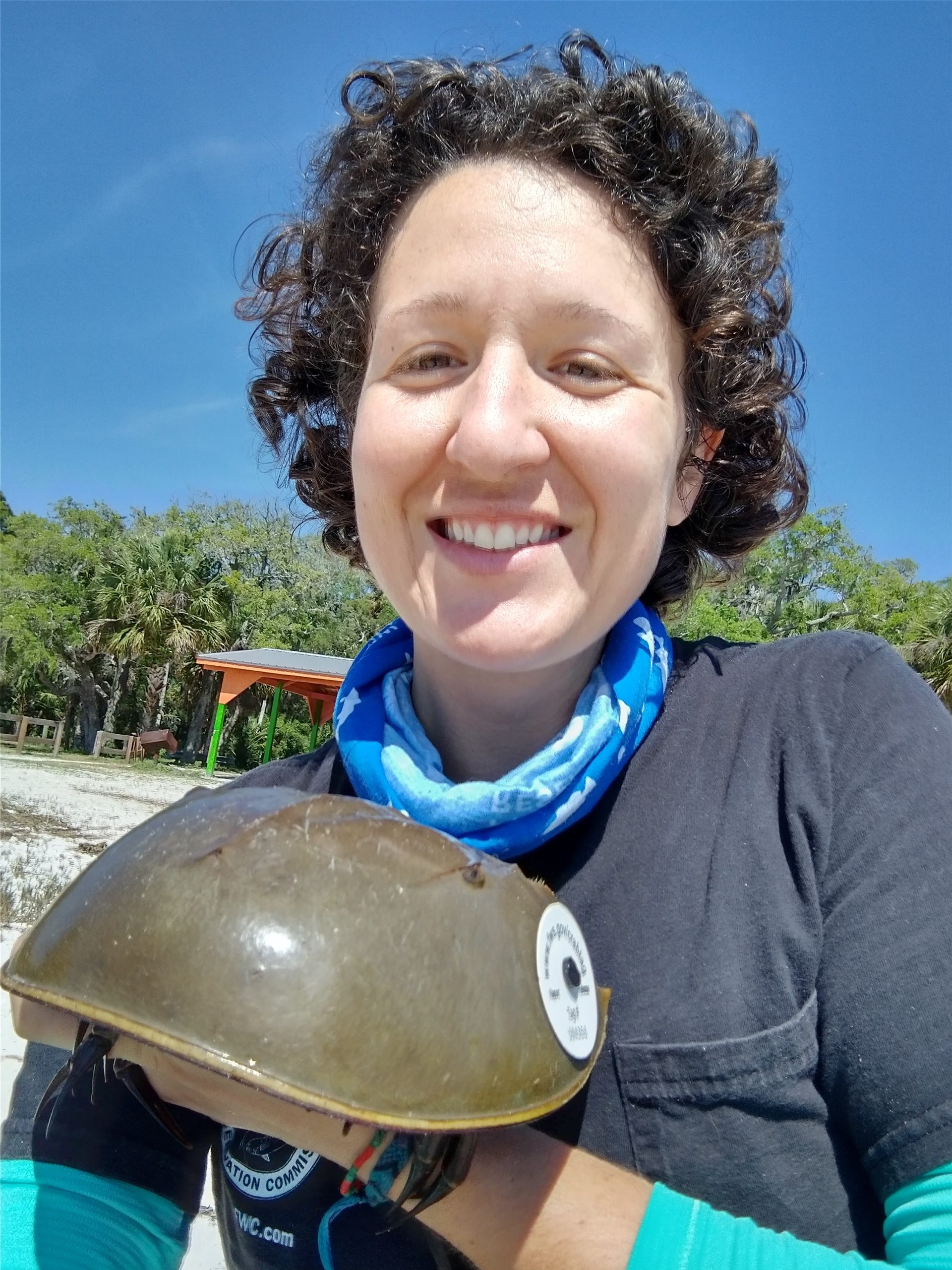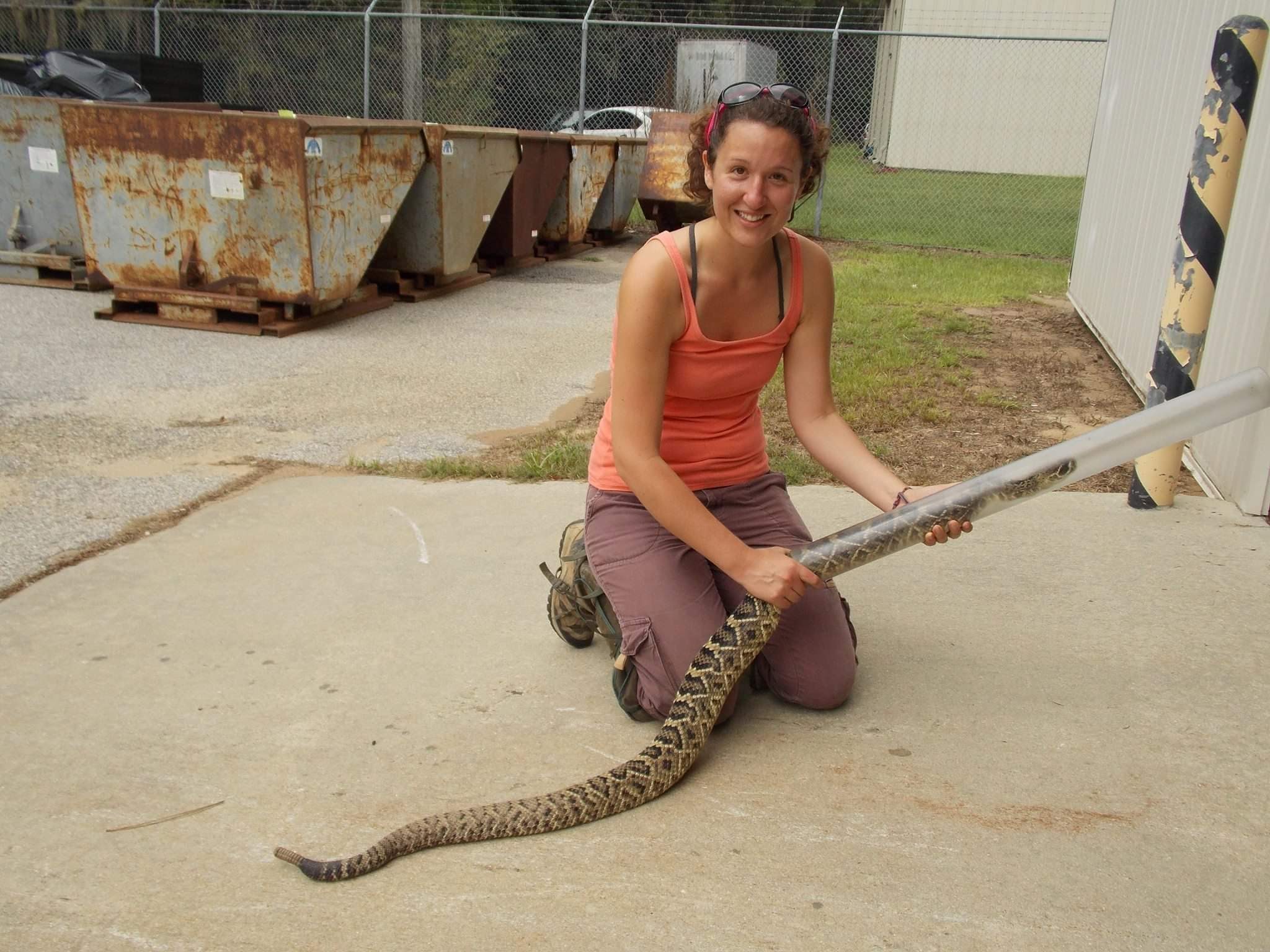 Berylnna Heres, a research associate with the Florida Fish and Wildlife Conservation Commission, is tasked with recruiting and training “citizen scientists” to survey and tag nesting horseshoe crabs. It is a tall task, and not solely because Florida has 1,400 miles of coastline to cover.
Berylnna Heres, a research associate with the Florida Fish and Wildlife Conservation Commission, is tasked with recruiting and training “citizen scientists” to survey and tag nesting horseshoe crabs. It is a tall task, and not solely because Florida has 1,400 miles of coastline to cover.
The expressionless horseshoe crab, resembling a crawling batting helmet, is not a creature likely to inspire wonder or rouse the emotions.
But listen to Heres for any length of time and one will quickly begin to marvel at this remarkable creature. Indeed, you will learn the horseshoe crab is “the silent hero of the COVID-19 crisis.”
Heres will give a presentation on the horseshoe crab at the Florida Birding and Nature Festival, scheduled for Oct. 15-17 at the TECO Manatee Viewing Center in Apollo Beach. The festival will offer field trips, exhibits and talks by wildlife experts.

Heres will give another presentation on rattlesnakes, which she has studied. She also has conducted research on eels and acknowledges, “I don’t need to work with the cute stuff.”
No one would accuse the homely horseshoe crab of cuteness. It is not a crab at all but an arthropod, related to scorpions and spiders and even the extinct trilobites. Indeed, the horseshoe crab is considered a living fossil because it predates the dinosaurs by millions of years and left them in the geologic dust. It is virtually unchanged from its prehistoric ancestors.
That genetic longevity has proved a key factor in combating the coronavirus and other diseases. Heres explains: “The horseshoe crab is 450 million years old, and it has an extraordinarily strong immune system. A compound in its blood – limulus amebocyte lysate – is used to determine if any injectable is contaminated. If it is contaminated, the compound will clot and reject it.”
Thus, the safety of the vaccines that are bringing COVID under control is dependent on the horseshoe crab’s amazing evolutionary resilience.
Heres said the compound used for medical purposes comes from horseshoe crabs in Northeastern states, where they grow much larger than in Florida. “Large female horseshoe crabs are captured, half their blood is harvested, and they are released back into the wild.”
Most survive, but about 15 percent do not. So Heres says it is good news that a synthetic alternative, modeled on limulus amebocyte lysate, has been developed and already is being used in Europe.
Nevertheless, the properties of the horseshoe crab’s blood – which is copper-based and blue in contrast to humans’ iron-based red blood – has been critical to the production of safe vaccines.

She says there are no hard data on Florida’s horseshoe crabs’ numbers, though most long-time residents report there are far fewer of the animals than decades ago.
That seems logical to Heres. “It’s safe to say they have declined. They spawn on beaches and if a sea wall is built, they can’t spawn there.”
There is only a small commercial market for horseshoe crabs, which is sold for bait – mainly for a modest eel fishery – and for aquariums.
The Florida Horseshoe Crab Watch Program that Heres coordinates seeks to collect scientifically accurate data throughout the state on nesting horseshoe crabs, which mate year-round. Similar initiatives are underway in other states.
The Florida Fish and Wildlife Conservation Commission launched the program in collaboration with the University of Florida in 2015. Volunteers are instructed on the proper scientific procedures and the goal is to recruit enough participants to obtain baseline information about horseshoe crabs throughout the state. Those interested can contact Berlynna.Heres@myfwc.com.
“Our research is fully dependent on the public,” she says.

But even those with only a casual interest in the horseshoe crab will enjoy Heres’ infectious enthusiasm about this underappreciated creature. That dagger-like tail is not used for defense; the tail enables the horseshoe crab to flip back over when a wave tosses it upside down. Should you come across a horseshoe crab that has not been able to right itself, Heres stresses, do not lift it by the tail, which can easily tear from its body and kill the creature. Instead, lift it gently by both sides of its shell to roll it over.
Despite its “pokey” exterior, the horseshoe crab is harmless to humans. Its tiny claws are designed to feed on small clams, crustaceans, and worms. But it will eat virtually anything, even algae.
Heres calls it the “vacuum cleaner of the bottom.”
Perhaps the horseshoe crab’s greatest ecological significance is that its eggs on beaches provide a “huge food source for shorebirds and migrating birds.”
Turtles, sharks, and other predators may feed on the horseshoe crab, despite its formidable exterior. It sheds its old exoskeleton and forms a larger one. It has nine eyes and possesses acutely sensitive vision. It may live upwards of 20 years.
 Heres, 31, was born in Massachusetts and later moved to St. Petersburg. She has been fascinated by wildlife, particularly reptiles, since childhood. While obtaining her master’s degree at Marshall University in Huntington, West Virginia, she tracked the much-reviled rattlesnake. When she came to work for the commission two years ago, she was eager to take on the challenge of studying another creature with public relations problems.
Heres, 31, was born in Massachusetts and later moved to St. Petersburg. She has been fascinated by wildlife, particularly reptiles, since childhood. While obtaining her master’s degree at Marshall University in Huntington, West Virginia, she tracked the much-reviled rattlesnake. When she came to work for the commission two years ago, she was eager to take on the challenge of studying another creature with public relations problems.
But to Heres, learning more about the inscrutable horseshoe crab has been a joy. “It is amazing to see how it fits into the ecosystem.”
